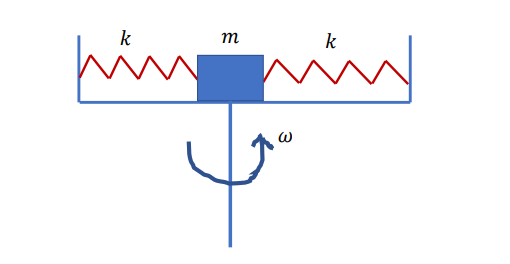I'm currently learning physics and sometimes I don't know how to approach a problem. I ran into this problem with oscillations combined with a circular motion, and I can't really find the answer.
Problem:
An object of mass 𝑚 is placed in the configuration (on a tray) below between two identical springs. The whole system rotates around an axis that passes through the middle of the tray with angular speed 𝜔. Does this system perform small oscillations? If it does, what are the oscillation frequency and its equilibrium position?
I started my demonstration with the following statement: If the body is in the equilibrium position, then there will be no small oscillations.
But since it's not specified, there comes to mind the idea of the body NOT being in the equilibrium position. I assume it will oscillate because there will be a return force proportional to the distance from the eq. position.
I thought about the case where the system is not rotating:
So the equivalent force would be:  and the period of oscillation:
and the period of oscillation:
I know that this is an answer to a whole other case, and my feeling is (because I am not sure how to prove it) that the period should depend on the rotation frequency of the tray.
What do I need to do in order to prove that? And what should the answer be in that case?


